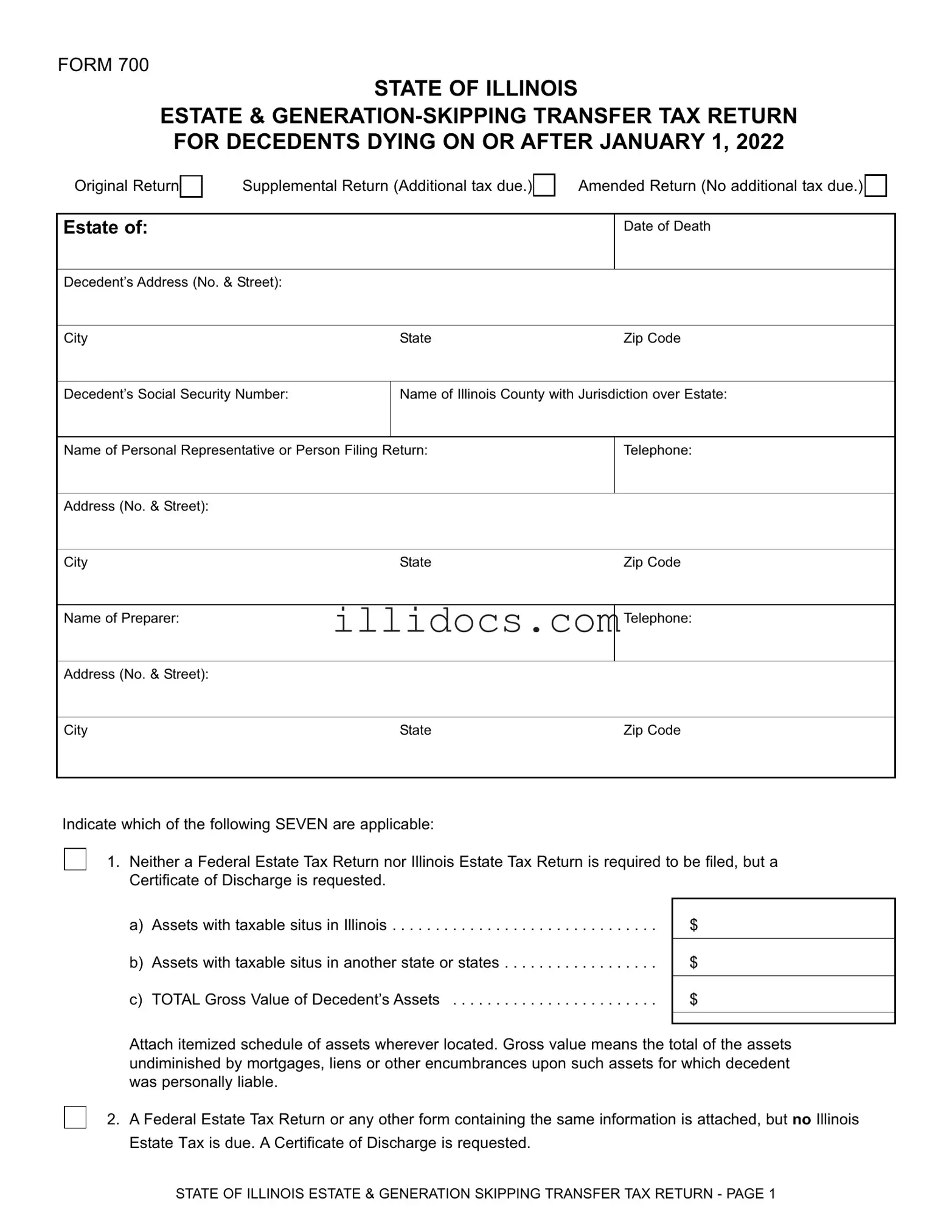What is the Illinois 700 Form?
The Illinois 700 Form is the Estate and Generation-Skipping Transfer Tax Return. It is required for estates of decedents who died on or after January 1, 2021. This form helps determine the Illinois estate tax due based on the decedent's assets and other relevant information.
Who needs to file the Illinois 700 Form?
If the gross value of a decedent's estate exceeds $4 million, the Illinois 700 Form must be filed. This applies regardless of whether a federal estate tax return is necessary. The estate representative is responsible for preparing and submitting this form.
What information is required on the form?
The form requires details such as the decedent's date of death, address, Social Security number, and the name of the personal representative. It also asks for a breakdown of the estate's assets and any applicable elections, like the Illinois QTIP election.
What is the Illinois QTIP election?
The Illinois QTIP election allows the estate to claim qualified terminable interest property for tax purposes. This election can be made in addition to any federal QTIP election. To make this election, specific information must be included on the form, including the dollar amount of the election and the surviving spouse's Social Security number.
How is the Illinois estate tax calculated?
The Illinois estate tax is calculated using a specific formula. The estate representative can use a calculator available on the Illinois Attorney General's website to determine the tax due. This calculation involves the tentative taxable estate and any adjusted taxable gifts.
What happens if the form is filed late?
If the Illinois 700 Form is filed late, penalties may apply. A late filing penalty of 5% of the tax due for each month or portion thereof may be charged, up to a maximum of 25%. Additionally, a late payment penalty and interest may also accrue.
Where should the Illinois 700 Form be filed?
The filing location depends on the decedent's county of residence. For Cook, DuPage, Lake, and McHenry Counties, the form should be filed with the Office of the Attorney General in Chicago. For all other counties, it should be filed in Springfield.
Can I request an extension for filing the form?
An extension can be requested if necessary. This request must be made within nine months of the date of death and should include an explanation or a copy of the federal extension request. The extension applies to both the Illinois 700 Form and any federal estate tax return.
What should I do if I need to amend the form?
If changes are needed after submitting the form, an amended return can be filed. This involves completing the appropriate sections of the Illinois 700 Form and attaching any necessary documentation, such as a copy of the amended federal estate tax return.
